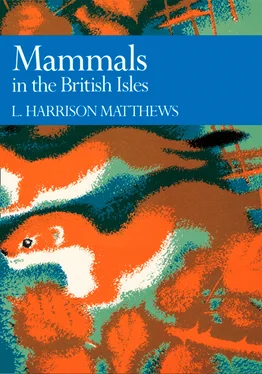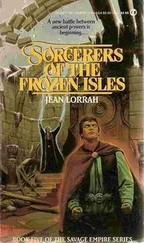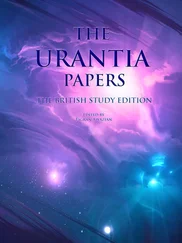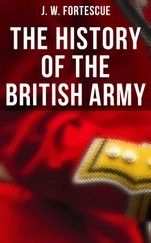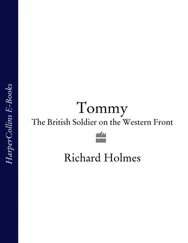The deposits of the lower Pleistocene are the strata of the Red Crag, with the Norwich Crag lying above them, that cover much of East Anglia. The oldest part of the Red Crag is the Nodule Bed found at its base in several places. All are marine deposits laid down when the sea level was considerably higher than at present, sometimes as much as forty feet. The fossil bones of land mammals found in them must therefore represent animal carcases that were washed into the sea, especially by rivers in flood, and consequently may not be a fair sample of the contemporary fauna. The Red Crag Nodule Bed, however, is derived partly from the breakdown of older rocks and contains the remains of their fossils in addition to its own contemporary ones; some are derived from Pliocene or older formations and are much worn and polished by wave action.
The alternating temperate and cold stages of the pre-glacial Lower Pleistocene occupied about the first three-quarters of the epoch, some one and a half million years, leaving only half or at most three quarters of a million years for the more spectacular events of the Middle and Upper Pleistocene. The flora of the different stages, and consequently the nature of the contemporary climate, are inferred from a study of pollen analyses and the invertebrate and vertebrate faunas. Throughout this immense period of time the fauna appears to have changed little in composition. The mammalian fossils known from the deposits laid down in the British Isles during the Lower Pleistocene include giant beavers, voles, bears, a panda, hyaenas, sabre-toothed and other cats, elephants and mastodons, horses and zebras, a tapir, rhinoceros, deer and oxen, all of extinct species, together with the still existing beaver and red fox.
This list does not represent a large fauna for so long a period of time but when we remember that, with the exception of a few species known from the cave deposits in Dove Holes, Derbyshire, all are from marine deposits, it is not surprising that it is short. The carcases of animals washed into the sea soon decay and disintegrate so that the bones are scattered and the most durable parts, the teeth, are those more likely to be preserved in marine deposits. The Nodule Bed of the Red Crag, as mentioned above, contains a mixture of fossils. We can well imagine the sea eroding the cliffs of Pliocene or earlier epochs, and then rolling and polishing the released fossils on the beach until they were again buried in new deposits, just as today the fossils of the Crag can be found lying loose on the beach. Some of the fossils thus represent animals that were not members of the Lower Pleistocene fauna, for example the tapir, three-toed horse, and the panda.
The Middle Pleistocene began with a temperate stage, the Pastonian, which was followed by a cold subarctic stage, the Beestonian; this gave way to another temperate stage, the Cromerian, which preceeded the onset of widespread glaciation. The deposits of the Pastonian are marine sands and gravels known as the Weybourne Crag, the lower part of which was laid down in the Baventian stage of the Lower Pleistocene. The stages that follow are represented by the Cromer Forest Bed series which includes both marine and freshwater sediments and contains many mammalian fossils. A comparatively large mammalian fauna has been recorded from these beds; some species can be assigned to the cooler or to the temperate stages, but the exact position of many remains doubtful.
The fauna of the temperate Pastonian stage included extinct species of ground squirrel, beaver, voles, mammoth, horse, rhinoceros, deer and bison, as well as the still existing wolf, otter, wild boar and hippopotamus. Some of these species may belong to the succeeding cold Beestonian stage when the ground was frozen with permafrost in places, but it has not been possible to reconstruct the mammalian fauna of the stage; it was probably reduced in variety and confined to arctic species.
The rich fauna of the temperate Cromerian stage has yielded a great quantity of fossils that have been collected and studied for nearly two hundred years. Many of them, however, cannot be assigned to the various zones into which modern research has divided the stage because, as already mentioned, the early collectors did not appreciate the importance of recording the exact horizons from which they took their specimens. The mammals living during this stage included a monkey, many different species of rodent large and small, many carnivores from wolf and red fox to hyaenas, lion and sabre-tooth. The ‘big game’ were well represented with elephants and mammoth, horses and zebras, rhinoceros, wild boar and hippopotamus, giant and smaller deer, bison, aurochs, musk ox and sheep.
Some of the species of this extensive list are typical of colder climates such as the ground squirrel, pine vole, glutton, and musk ox; and others of warmer ones such as the monkey, spotted hyaena and hippopotamus. The majority, on the other hand, are species that might live under a temperate climate like that of the present day in the British Isles. When the Cromerian stage drew towards its end the climate became cooler, and mixed oak forest was replaced by boreal forest with pines and birch, and with open heaths, until the Anglian glacial stage wiped out most of the flora and probably all of the mammalian fauna. The history of the present mammalian fauna of the British Isles must therefore start at the end of the Anglian glaciation, which wiped the slate clean for a new start, leaving us only a few tons of fossil bones from which to infer what had gone before.
It is not surprising that hardly any mammalian fossils are known from the Anglian glaciation, for at its severest the southern part of the country, the only part that was not covered by the deep ice sheet, was an arctic desert. The few that have been found are assigned to the early or late parts of the stage when glaciation was developing or retreating – a ground squirrel to the former and the red deer to the latter. As, furthermore, no vertebrate fossils of other classes are known from the Anglian the conclusion that the glaciation exterminated the entire mammalian fauna is inescapable. The deposits of the Anglian stage are a complicated series of tills, including the Boulder Clay, produced by the ice moving in different directions at different times as the glaciation proceeded.
When the ice at last retreated the temperate flora and fauna of the Hoxnian stage gradually moved in from the continent as the desert gave way to tundra, then to boreal forest followed by mixed oak forest. The fossils of this interglacial stage are preserved mainly in freshwater deposits, though some marine and estuarine deposits exist from its later part. It was during this stage, too, that man first made his way into the British Isles, for his palaeolithic flint artifacts have been found in several places. The former claim that man had been present at a much earlier time is now discredited – the ‘eoliths’ from the Crag that were supposed to be primitive tools are no more than fortuitously broken stones. The only skeletal remains of alleged palaeolithic man living in the Hoxnian stage that have been found in the British Isles are some fragments of a skull from the Thames terrace gravel at Swanscombe, Kent. One bit of the skull was found in 1935, another in 1936, and a third in 1955. Although Oakley in 1969 116tabulated the Swanscombe skull, among the ‘early Neanderthaloids’ dating from about a quarter of a million years ago, the fragments, the occipital and two parietal bones, are indistinguishable from those of modern man. Since then there has been some controversy about the dating of the Hoxnian interglacial 119’ 127; but a dating of material from ‘a few centimetres below’ the horizon of the Swanscombe skull gave ages of up to more than 272,000 years. 139This, unfortunately, does not give irrefutable proof of the age of the skull, and still leaves open the possibility advocated by some that the skull fragments may have become included in the gravel as intrusions at a later date. With the possible exception of the Swanscombe skull, the earliest remains of man in the British Isles, apart from his artifacts, date from the middle of the Devensian glaciation, at least some two hundred thousand years later.
Читать дальше
